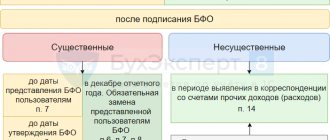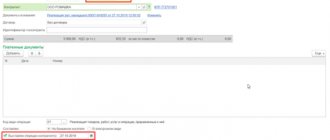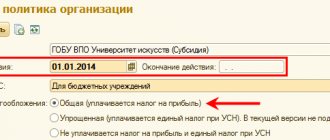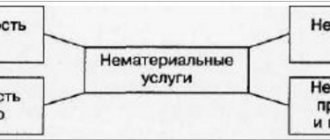Tax legislation obliges persons who own vehicles to annually accrue and pay tax. The frequency of this procedure increases if the region has provided for mandatory advance payments of transport tax based on the results of each quarter.
Each time, when calculating a tax liability in relation to a vehicle, an organization is faced with the need to reflect the results obtained in accounting using double entries on accounting registers. Postings are made upon the fact of the calculation (tax accrual), as well as upon the transfer of the accrued tax amount to the local budget (tax payment).
Since the responsibility for maintaining accounting falls only on organizations, the question of correctly reflecting the accrual and payment of transport tax in accounting arises only before legal entities. Individuals with the formation of an individual entrepreneur must pay tax on their vehicles, but they do not need to reflect this information using accounting entries.
Explanation of the concept of transport tax
Transport tax is regional.
Its rates are regulated by regional authorities, but they should not differ more than 10 times from the rate specified in the Tax Code (Article 28 of the Tax Code of the Russian Federation). This tax must be paid by all owners of transport (Article 357 of the Tax Code of the Russian Federation) - legal entities and individuals who have at their disposal (by right of ownership or ownership) transport registered in accordance with the laws of the Russian Federation.
Read about the nuances of vehicle registration and the tax consequences of its absence in the article “Lack of vehicle registration will not exempt you from transport tax .
Creation methods
The method of reflecting expenses for payment of transport tax is established in the section:
- Main - Settings - Taxes and reports - Transport tax tab - link Methods for recording expenses;
- Directories - Taxes - Transport tax - link Methods of recording expenses.
It can be set:
- for all organizations;
- for all fixed assets in the organization;
- for a specific fixed asset.
Expense Reflection Methods register, click the Create and indicate in the Valid from field the date from which the new expense reflection method begins to take effect.
How is transport tax calculated?
The obligation to independently calculate tax is assigned to legal entities. Despite the fact that tax returns for 2021 for organizations have been cancelled, and the Federal Tax Service must send them messages with the amount already calculated (similar to how it now does it for individual entrepreneurs and individuals), the tax of a legal entity is still calculated they will do the same on their own. First, they must know the amount in order to make advance payments throughout the year (if they are established in the region). And secondly, the message from the tax office is more of an informational nature, so that the company can compare its accruals with those made according to the tax authorities. After all, she will receive it after the deadline for paying advances (see, for example, letter of the Ministry of Finance dated June 19, 2019 No. 03-05-05-02/44672).
The calculation of transport tax involves the application of a rate to the tax base, taking into account the time the transport is in the payer’s ownership. In some cases, an increasing coefficient is also applied (clause 2 of Article 362 of the Tax Code of the Russian Federation).
Please note that the tax must be paid not by the one who uses the vehicle, but by the one who owns it. Even if the owner has issued a power of attorney to drive the vehicle, the authorized person does not pay tax.
Tax is calculated for the full month during which the vehicle is owned by the payer. In this case, the month of registration is considered complete if the vehicle is registered before the 15th day inclusive. The month of deregistration is considered complete if the object is deregistered after the 15th day.
For example, if a car was purchased and registered on 04/15/2020, then the transport tax for 2021 for the buyer was calculated for the period of ownership of the car starting from April 2020, and for the seller - until March 2021 inclusive.
A sample payment order for transport tax for organizations and detailed instructions for filling it out can be found in ConsultantPlus. Get trial access to the system for free and go to the Ready-made solution.
Vehicles exempt from taxation
Article 358 in paragraph No. 2 defines objects that are not subject to taxation. Here are some of them:
Calculation of transport tax: postings
According to PBU 10/99 (approved by order of the Ministry of Finance of Russia dated May 6, 1999 No. 33n), transport tax is considered an expense for a normal type of activity. How exactly it will be shown in accounting depends on where the transport is used.
In general, transport tax is reflected in accounting by the following entries:
- Dt 20, 23, 25, 26, 44 Kt 68 - tax or advance payment has been accrued;
- Dt 68 Kt 51 - tax payment has been made.
If a unit of transport is used in an activity unrelated to the main one, the tax accrual on it is reflected in other expenses (clause 11 of PBU 10/99). In this case, in accounting it will look like this: Dt 91.2 Kt 68.
Do not forget to properly prepare the primary documents before making accounting entries. An accountant's certificate is a document that reflects the tax or the accrued advance payment for it.
The payer must indicate exactly how this tax will be reflected in the accounting policies in the accounting policy.
For the latest changes in the document regulating the main issues of formation of accounting policies, read the material “PBU 1/2008 “Accounting Policies of the Organization” (nuances).”
Tax accounting of transport tax
To calculate income tax, transport tax is taken into account in other expenses that are associated with production and sales (clause 1 of Article 264 of the Tax Code of the Russian Federation).
When calculating the simplified tax system with the object “income”, the amount of transport tax is not taken into account, since expenses do not matter for its calculation (clause 1 of article 346.18 of the Tax Code of the Russian Federation). When simplified with the object “income minus expenses,” transport tax is included in expenses (Article 346.16 of the Tax Code of the Russian Federation). Unpaid transport tax cannot be taken into account when calculating the simplified tax system.
Read more about the tax under the simplified tax system in the article “Transport tax under the simplified tax system: calculation procedure, terms, etc.” .
Now let's move on to UTII. Let us immediately note that as of 01/01/2021, this tax regime is canceled, therefore the following provisions are relevant until 01/01/2021.
So, with UTII, the amount of imputed tax does not depend on the amount of transport tax, since its calculation is done without taking into account income received and expenses incurred.
If the payer uses OSNO and UTII together and transport is used in both taxation regimes, the tax amount must be divided. When using transport in only one of the modes, such separation is not necessary. If transport was used in activities related to OSNO, it can be taken into account to reduce income tax, if with UTII, the imputed tax cannot be reduced.
To correctly distribute the transport tax between the two regimes, you need to calculate what part is the income for each type of activity. To calculate the portion of income under OSNO, you must do the following: divide the amount of income under OSNO by income from all types of activities. The transport tax related to OSNO is determined by multiplying the amount of transport tax and the share of income received from OSNO. Transport tax related to activities on UTII is calculated in the same manner, using in this calculation the amount of income received on UTII. The sum of the results obtained from both calculations should give the total amount of accrued tax.
About the division of expenses when simultaneously applying the simplified tax system and UTII, read the material “The procedure for separate accounting for the simplified tax system and UTII.”
The order of filling out the fields
Valid from
In the Valid from , indicate from what date the “Platon” method of reflecting expenses for transport tax and payments is applied.
Switch For all fixed assets
If the For all fixed assets is selected, then the method of reflecting expenses is set for all fixed assets in the database.
Switch For fixed asset
If the For fixed asset is selected, then the method of reflecting expenses is set for the specified fixed asset.
The main thing
In the Fixed Asset , set the name of the fixed asset for which this method of reflecting expenses is valid. The field is available for editing if the switch For fixed asset .
Switch For all organizations
If the For all organizations is selected, then the method of reflecting expenses is set to the same for all organizations in the database.
Switch For organization
If the For organization is selected, then the method of reflecting expenses is set only for the specified organization.
Organization
In the Organization , set the name of the Organization for which this method of recording expenses applies. The field is available for editing if the For organization .
Setting up expense reflection
- In the Account , the cost account is indicated, the debit of which will accrue transport tax, as well as Platon payments, if the vehicle is registered in this system.
The invoice is established depending on where the vehicle on which the transport tax is calculated is used:
- If for the main activity, then the transport tax relates to expenses for ordinary activities and is reflected in cost accounts 20, , , , 44 (clause 5 of PBU 10/99).
- If not in the main activity, but, for example, rented out, then the tax relates to other expenses and is reflected in accounts 91.02 (clause 11 of PBU 10/99).
- In the Division , select the division from the directory of the same name to which the costs relate. Available if cost accounting by departments is provided.
For income tax, amounts of transport tax are included in indirect expenses (other expenses) and are reflected in taxes and fees on page 041 of Sheet 02 of Appendix No. 2 PDF (clause 1, clause 1, article 264 of the Tax Code of the Russian Federation, clause 7.1 of the Procedure filling out a tax return for corporate income tax, approved by Order of the Federal Tax Service of the Russian Federation dated October 19, 2016 N ММВ-7-3/ [email protected] ).
In order for transport tax costs to be correctly reflected in income tax reporting, it is necessary that the cost item have the Expense Type Taxes and fees , i.e.:
- If accounts 20, , , , 44 are selected the Account the Cost Item can be created.
- If account 91.02 is selected in the Account , then the cost item in the Other income and expenses can be registered.
This cost item is indicated only to account for transport tax. When reflecting the “Platon” fee, the cost item in the transactions of the payment accounting document in “Platon” is automatically cleared.
See also:
- Procedure for calculating and paying tax
- Accounting for board costs in the Platon system
Did the article help?
Get another secret bonus and full access to the BukhExpert8 help system for 14 days free of charge
Related publications
- Is it necessary to fill out the “Method of reflecting expenses” for transport tax in 1C every year? Is it necessary every year at the beginning of the year, as in the accounting...
- When transferring an employee to another department, how can you reflect his salary using different methods of reflection, if the method of reflection cannot be clearly defined for the department? ...
- During the transition from 2.0 to 3.0, regulatory operations were not completed: calculation of property tax and calculation of transport tax. Good evening. The company kept records in accounting 2.0. It was carried out...
- Is it possible to use the Storno document for a regulatory operation to reduce advance payments of transport tax in previous quarters? You do not have access to view. To gain access: Complete...
Results
Independent calculation of transport tax is a thing of the past for legal entities. But they will continue to keep records of tax accrual and payment, reflecting it in accounting entries. In accounting, tax usually forms expenses for activities performed. In tax accounting, it is included in costs that reduce the base for income tax or simplified tax system with the object “income minus expenses.” When combining taxation regimes, the tax may be distributed.
Sources:
- Tax Code of the Russian Federation
- Order of the Ministry of Finance of Russia dated May 6, 1999 No. 33n
You can find more complete information on the topic in ConsultantPlus. Free trial access to the system for 2 days.
Setting the way expenses are reflected
In 1C, to store information about the method of reflecting costs for accrued transport tax, the information register Methods for reflecting tax costs .
Purpose of the register
The information register Methods of reflecting tax expenses is used to determine the method of reflecting expenses for property taxes:
- property tax,
- land tax,
- transport tax.
In our article we will look at the transport tax and will refer to it as a register of information Transport tax: method of reflecting expenses or Methods of reflecting expenses - this is the name displayed on its form and will be familiar to the user.






